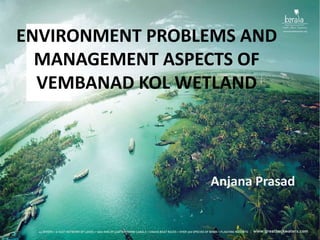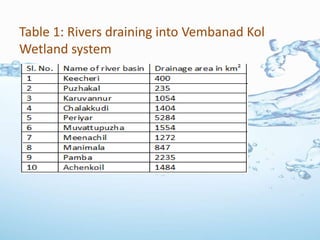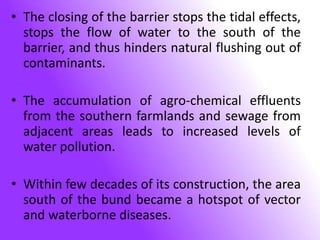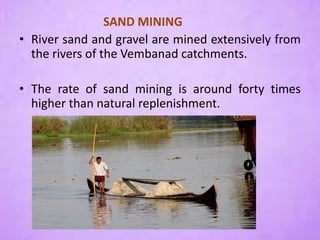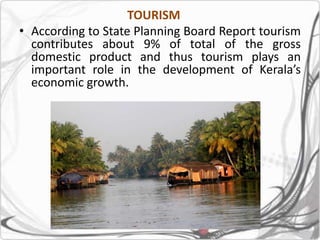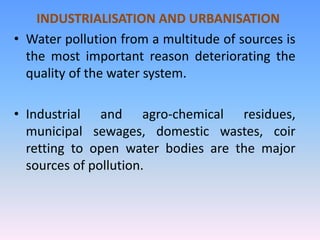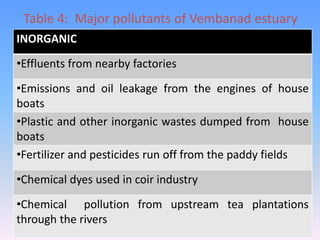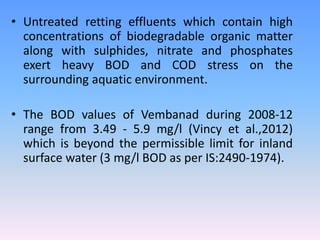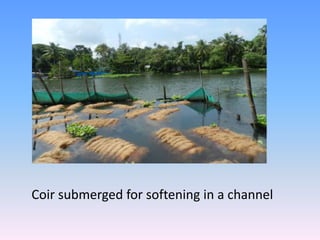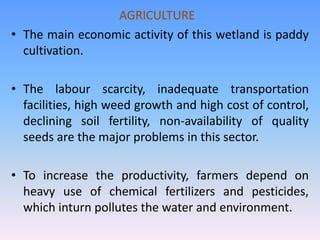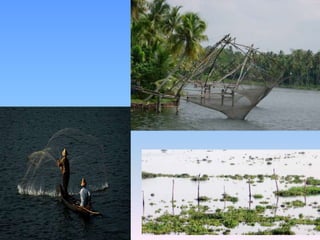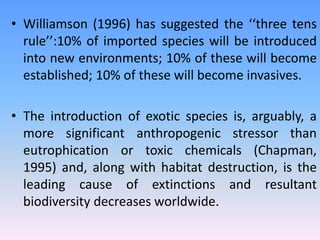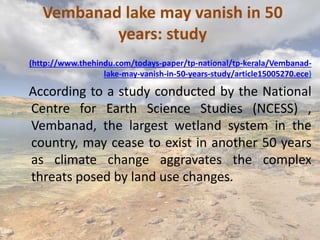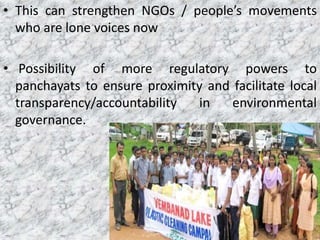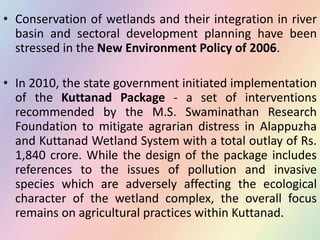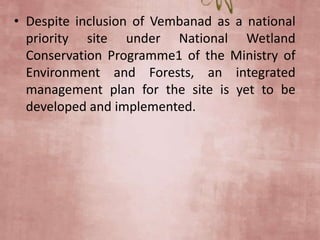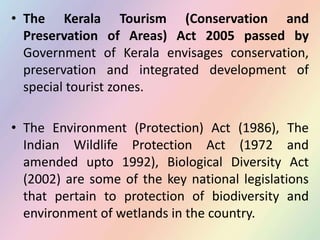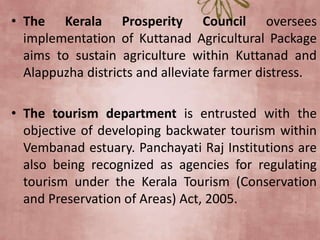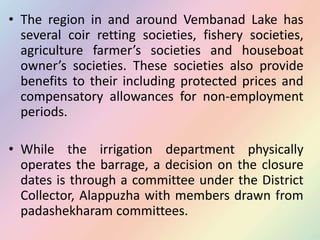The document summarizes environmental problems and management aspects of the Vembanad Kol wetland system in Kerala, India. It begins with background on wetlands and an introduction to the Vembanad Kol system. It then discusses the wetland's physical characteristics, ecological significance, economic potential, and history of interventions. Major problems are outlined such as the impacts of physical barriers, sand mining, tourism, industrialization, and more. Potential management strategies are proposed, including improving education and engagement, strengthening institutional oversight, and establishing more participatory governance. The wetland is at risk of vanishing within 50 years due to climate change exacerbating various threats if no action is taken.
